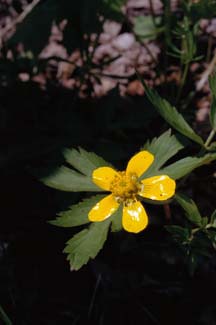This classic of midwestern natural history is back in print with a new format and new photographs. Originally published in 1979, Wildflowers of Iowa Woodlands introduced many naturalists to the beauty and diversity of the native plants of the wooded communities that once covered more than 6 million acres of the state. Now redesigned with updated names and all-new images, this reliable field companion will introduce woodland wildflowers to a new generation of outdoor enthusiasts in the Upper Midwest.
The species accounts are accompanied by brilliant full-page color photographs by Larry Stone, Thomas Rosburg, Carl Kurtz, and Linda and Robert Scarth. In clear, straightforward, and accessible prose, authors Sylvan Runkel and Alvin Bull provide common, scientific, and family names; the Latin or Greek meaning of the scientific names; habitat and blooming times; and a complete description of plant, flower, and fruit. Particularly interesting is the information on the many ways in which Native Americans and early pioneers used these plants for everything from pain relief to insecticides to tonics.
Iowa’s original savannas, woodlands, and forests were cleared with amazing thoroughness, yet enough beauty and diversity remain to give joy to hikers, birders, and mushroomers. Wildflowers of Iowa Woodlands will inspire both amateurs and professionals with the desire to learn more about the wonders of today’s woodlands.
“In the tradition that only Sy Runkel can claim, Wildflowers of Iowa Woodlands has long provided plant enthusiasts with identification tips, habitat affinities, Native American and pioneer uses, and general ethnobotanical folklore of frequently observed wildflowers in the Midwest. The species represent a broad range of wooded environments, including dry rocky or sandy woodlands, oak savannas, mesic forests, and swamps and floodplain forests. This revised edition, presented in a beautifully designed vertical format, has all-new color photographs and updated scientific names. It is a treasure chest of tidbits, a valuable companion for wandering naturalists and those family hikes in the woods. This is a book you’ll find yourself using again and again.”—Thomas Rosburg, Drake University






